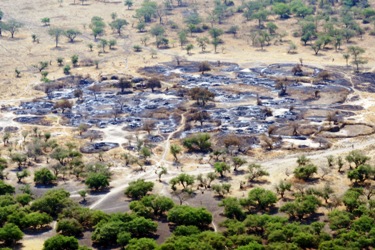Jonglei’s Pibor commissioner says displaced starts returning, denies Akobo attack
January 11, 2012 (JUBA) – The commissioner of beleaguered Pibor County, Joshua Konyi, said Wednesday that said some people, mostly women with children and elderly people, who fled the violence, have started returning to the area, after 6,000 armed men from the Lou Nuer tribe started withdrawing from the area.

“The security situation has subsided though it remains unpredictable”, commissioner Konyi told Sudan Tribune on Wednesday.
“Additional police forces and [troops from the South Sudan army] SPLA have arrived. They are providing security to those who are returning”, he adds.
Konyi denied reports claiming that his neighboring County of Akobo had been attacked by armed groups allegedly identified as members of Murle ethnic community, a move seen as retaliatory attack against by Lou Nuer in late December and early January.
The Akobo commissioner says 24 people were killed in the attack.
“It is only here in Pibor where we have people returning because SPLA and police forces have been deployed”, he adds declining to comment further on the attack.
However, South Sudan’s minister of information, Barnaba Marial Benjamin, in a separate interview said armed elements believed to be members of Murle tribe on Sunday attacked two villages near Akobo county, Jonglei State.
“There were reports on Sunday that two villages were attack[ed]. This is in Lou [Nuer] territory and the Murle were believed to have launched this”, Marial said.
Jonglei State governor, Kuol Manyang Juuk, who is currently in Juba said 22 were killed and 23 others sustained injuries in the Deng Jok Akobo town, while another attack took place in an area called Kaikuin where two women were killed and some cattle were taken.
“At this moment the area is quiet. People are returning to their normal life”, Manyang told reporters at the South Sudan National Assembly where he was briefing council of states.
“The SPLA and police forces have been deployed and more are being sent”, he said.
United Nations, in an assessment report, describes the security situation in Jonglei State as “volatile” after inter-communal violence between the Lou Nuer and Murle communities flared in late December.
In the two week Luo-Nuer offensive, villages were burnt and cattle seized cattle in retaliation for earlier attacks allegedly perpetrated by the Murle in August in which over 600 people were reported to have died.
Below is the chronology of the latest violence as detailed in the UN report :
- On 23 December, between 6,000 and 8,000 armed Lou Nuer men advanced on Lopilod village in Likuangole payam [district] in Pibor County, burning villages in the area.
- On 26 and 27 December, the village of Likuangole was razed, with houses burnt to the ground, an NGO clinic providing essential medical support to the community was looted and destroyed. All boreholes in the town were destroyed.
- On 31 December, the Lou Nuer reached the periphery of Pibor town, looting and burning a number of huts, including two NGO compounds. In the following days, the armed attackers marched south towards Fertait and Bilait.
- On 4 January, they began to return north, according to peacekeepers from the UN Mission in South Sudan (UNMISS). People who had fled Pibor town in fear of attacks started to return in early January when the armed youth moved out of the area.
(ST)
